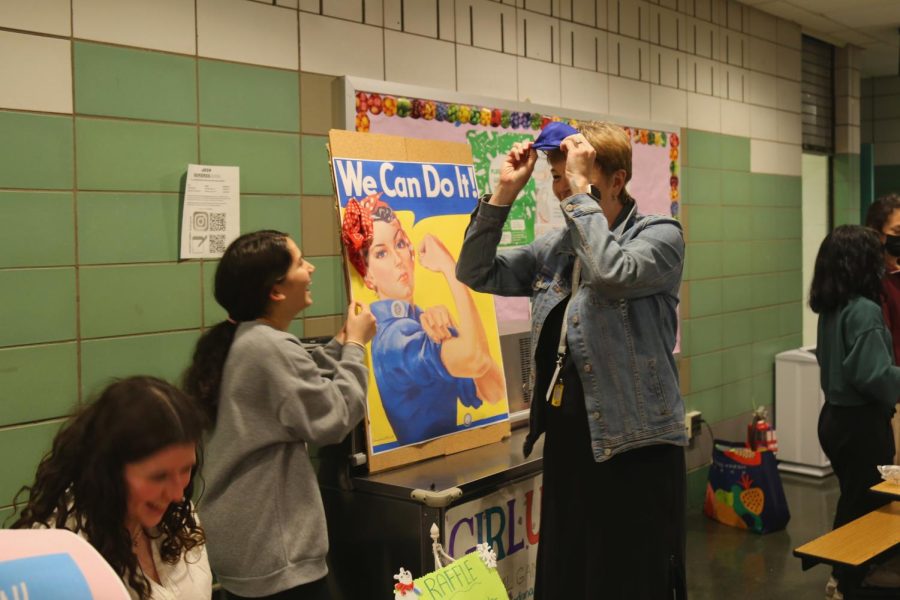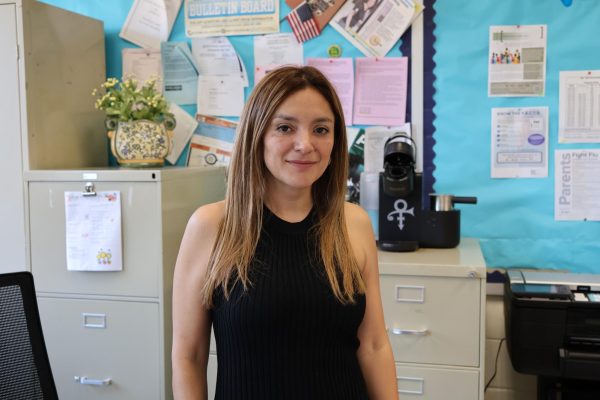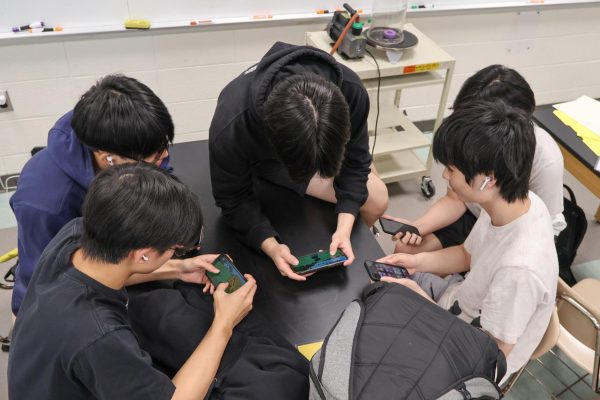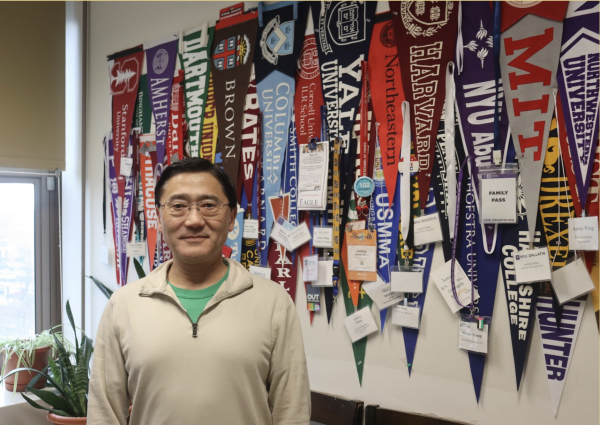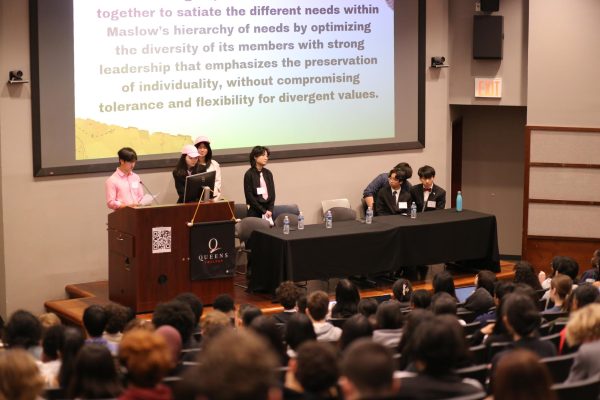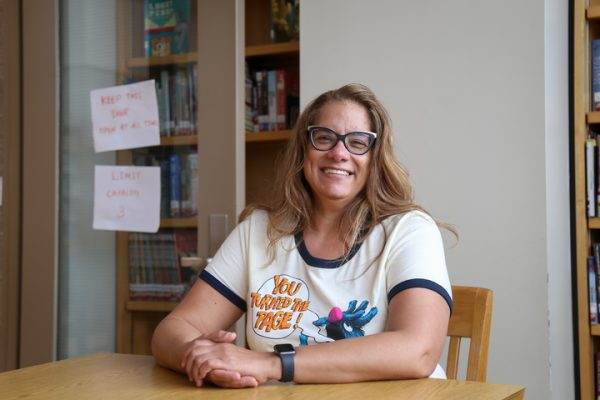Student Union holds first Winter Carnival event in four years
Students represented their clubs at the Winter Carnival by hosting activities and selling food. Pictured is Ms. Fee participating in Girl Up’s booth.

The Winter Carnival, organized by the Student Union, invited various THHS clubs, teams, and publications to host games, activities, food booths, and more in order to fundraise for their causes and help garner students’ interest in their organizations. The carnival was also open to the public, so both students and teachers who attended were encouraged to bring their family and friends along with them.
Senior Advisor Blayne Gelbman said, “The overarching purpose of it is two main things: one is to provide a sense of community for the students here [and encourage them] to be a part of the social aspect of the school, and the second is to also help to raise funds for all of the clubs [in the school] that participated.”
The last school Winter Carnival took place in 2019, prior to the COVID-19 pandemic, ensuring that many students and some teachers experienced the event for the first time this year. This made the planning process challenging for the SU and administrators, and they had to take creative liberties to make the event their own. Mr. Gelbman said, “We kind of reinvented what it was. We didn’t have a blueprint to work off of, so we just sort of created what we thought it should be.”
SU Treasurer Hasan Raza said that the clubs were mainly organized alphabetically, and “in our floor plan, we decided to be open concept to leave as much room in the center as possible for flow, while robotics sold boba and band volunteers played in the lobby… As for efficiency, I would say that the setup worked very well as carnival goers could [easily] come and go from [each activity].”
Tickets were purchased at the door upon entry to the carnival and could be used at booths to play games, buy food, participate in fun activities, or win prizes. The ticketing system ensured that each ticket was priced at around fifty cents, with some of these funds going to the SU and most being allocated to the individual participating clubs’ treasuries for use in things like hosting events, donating to charities, or buying merchandise. The carnival also included a Toy Drive through which attendees could receive ten tickets for the donation of one toy.
Freshman Sophia Lee said, “I enjoyed the carnival, it was really fun to be around friends and get to know people better. It was really fun to do activities at the different booths.”
Junior Emily Kapica, Vice President of the Girl Up club, said, “We had a waffle-making section, a bracelet-making [section], and a game and raffle section. Our game was pin the tail on the donkey, except it was pin a bandana on the Rosie the Riveter ‘We Can Do It’ picture.” The fair both provided this social, entertaining aspect and benefitted the clubs’ individual missions. Emily said that the carnival “helped our club raise money and definitely allowed us to showcase ourselves to the other clubs and people [in attendance].”
One of the new additions to the carnival this year was the dunk tank, where Mr. Gelbman sat in the janitorial closet and students were given the opportunity to attempt to “dunk” him with a bucket of water. Some other booths included cotton candy made and sold by Key Club, a finger painting activity held by the Art club, a step dance challenge led by the Step dance team, a photo booth run by The Phoenix, and a Just Dance booth hosted by the Tech Crew.
Hasan said, “I thought the turnout was really great. Many people showed up and had an amazing time, which made me really happy… I think we [would have made] past carnival [participants] proud with how successful the event was in garnering morale. I suspect that we will take even greater measures to ensure that the turnout increases more for next year.”
Mr. Gelbman said, “For our first time, I think this was an overwhelming success, but in our debrief afterward some of the things that surfaced were lack of teacher [and parental] involvement. We [also] didn’t access and leverage the PTA [or] get the word out to the teachers and their families as well as we should have. I think if we had done that, the turnout would have been better.”
Your donation will support the student journalists of The Classic. Your contribution will allow us to purchase equipment, support our extracurricular events, celebrate our staff, print the paper periodically, and cover our annual website hosting costs.
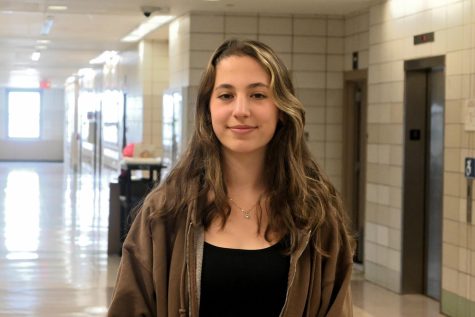
Diana is a senior at Townsend Harris High School. Her favorite subjects in school are English and science, and she enjoys reading, writing, photography,...
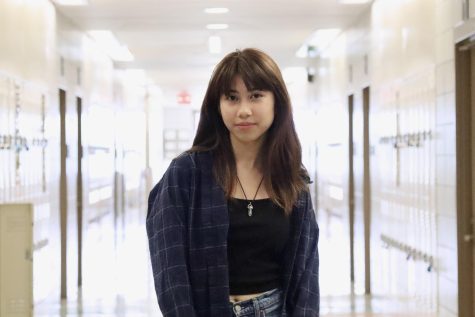
Katherine Lian is a senior at Townsend High School who enjoys taking pictures, dancing, and trying new things. Her favorite memory with The Classic was...


























